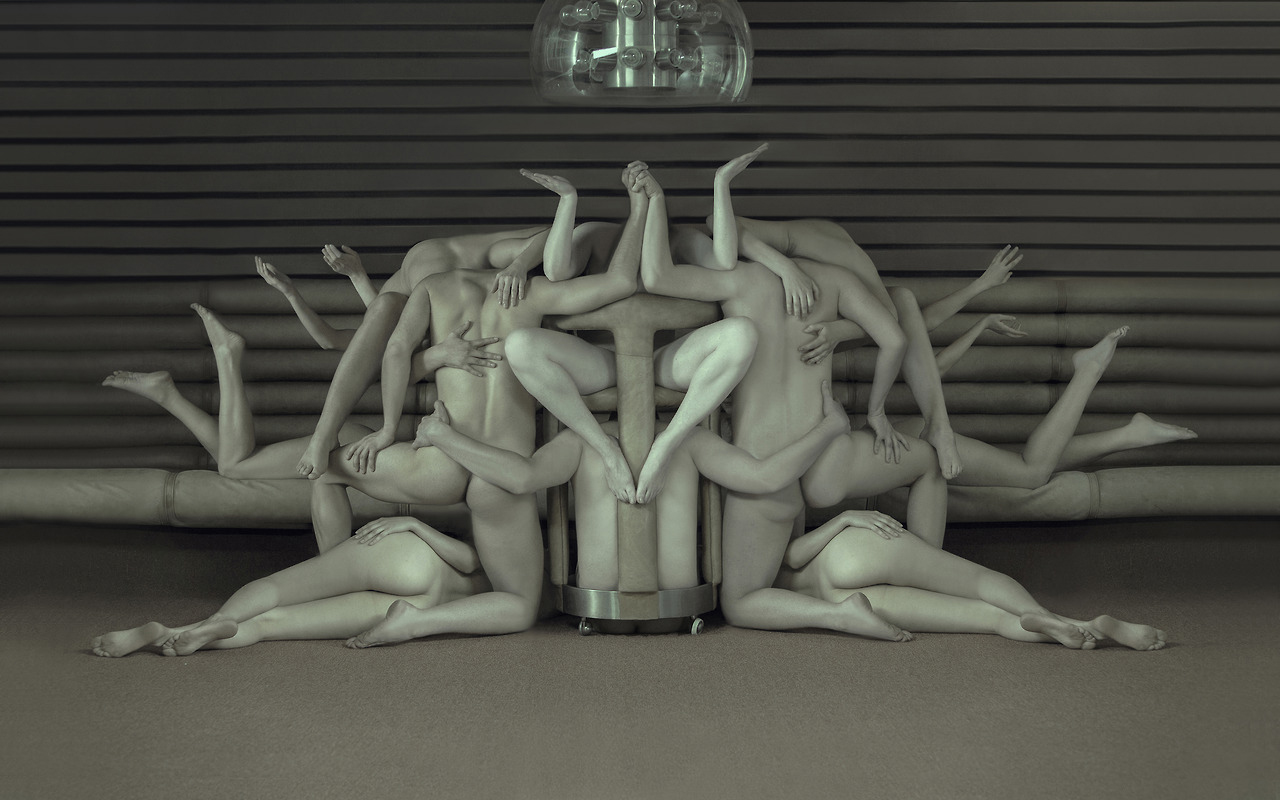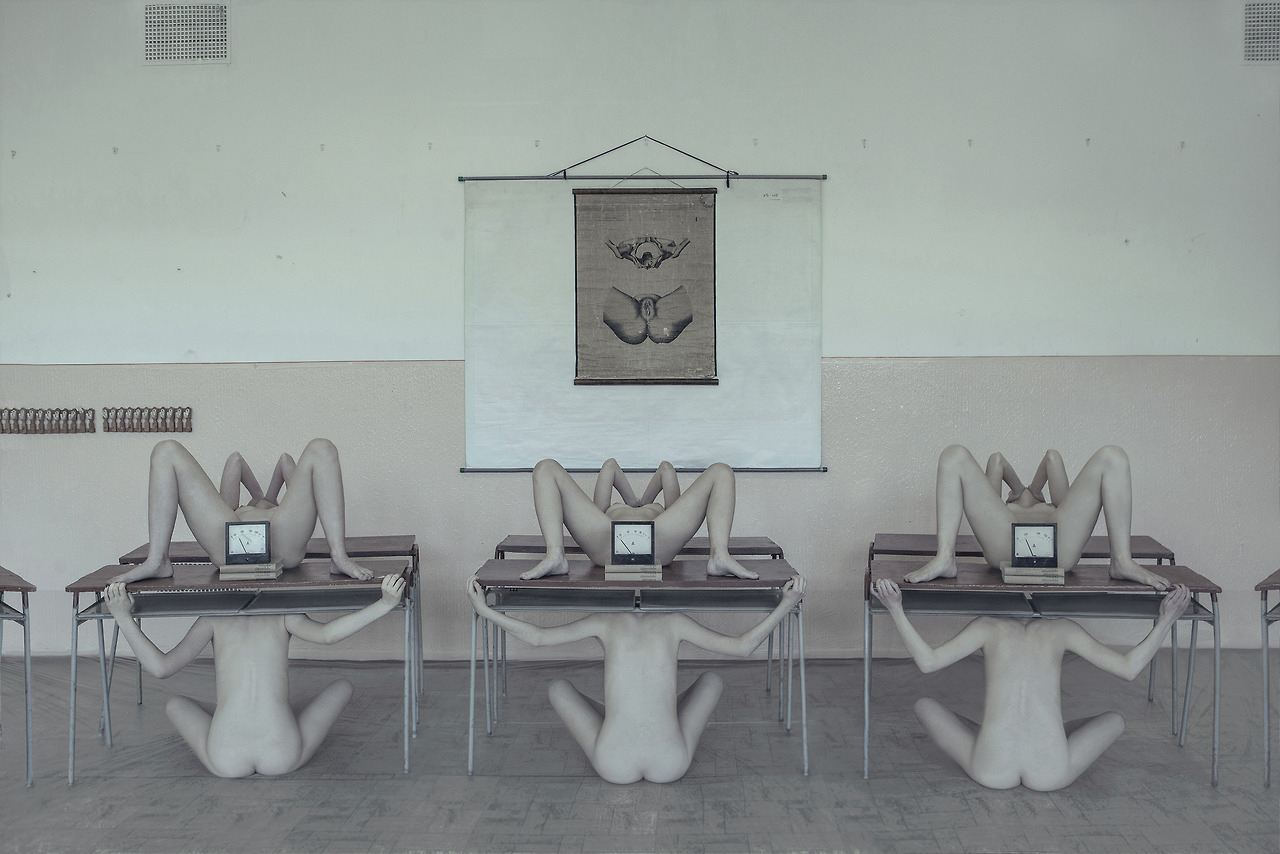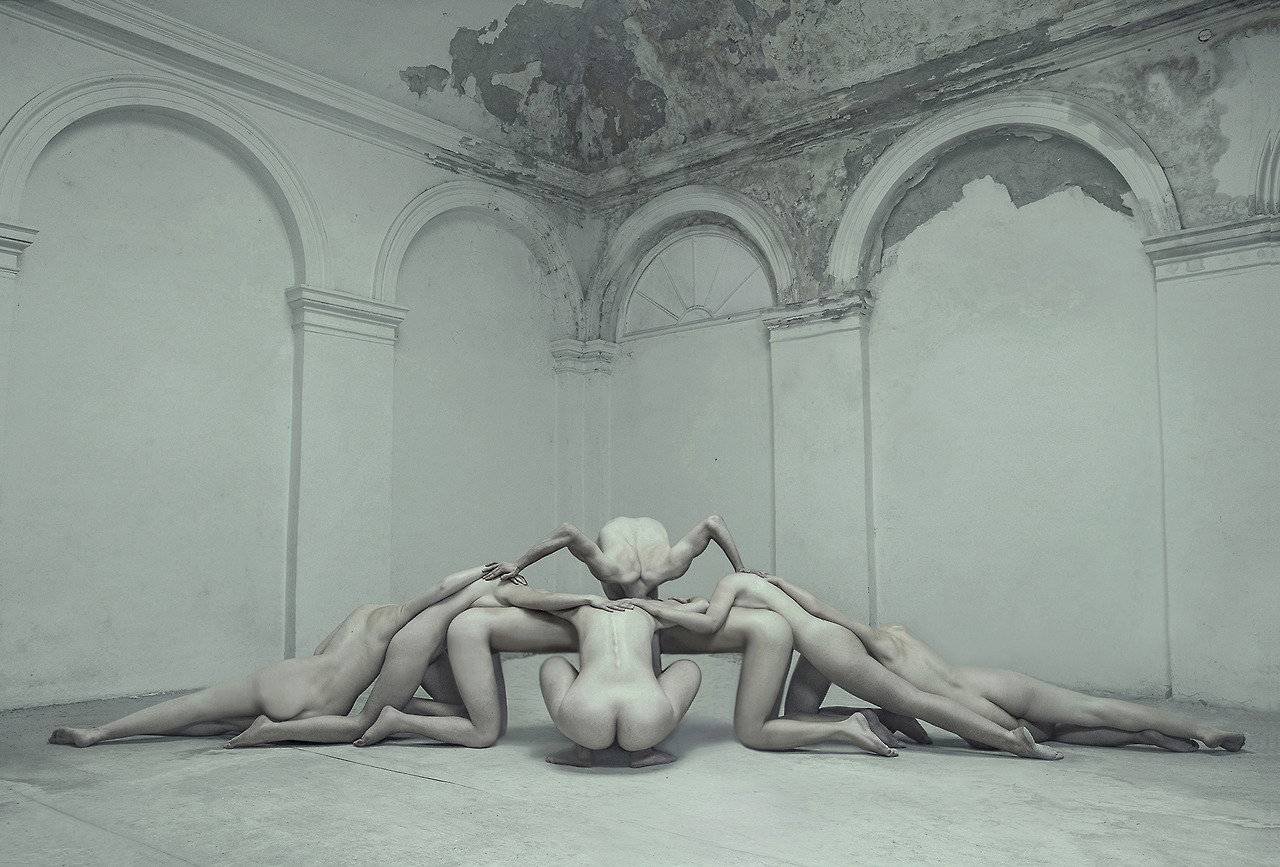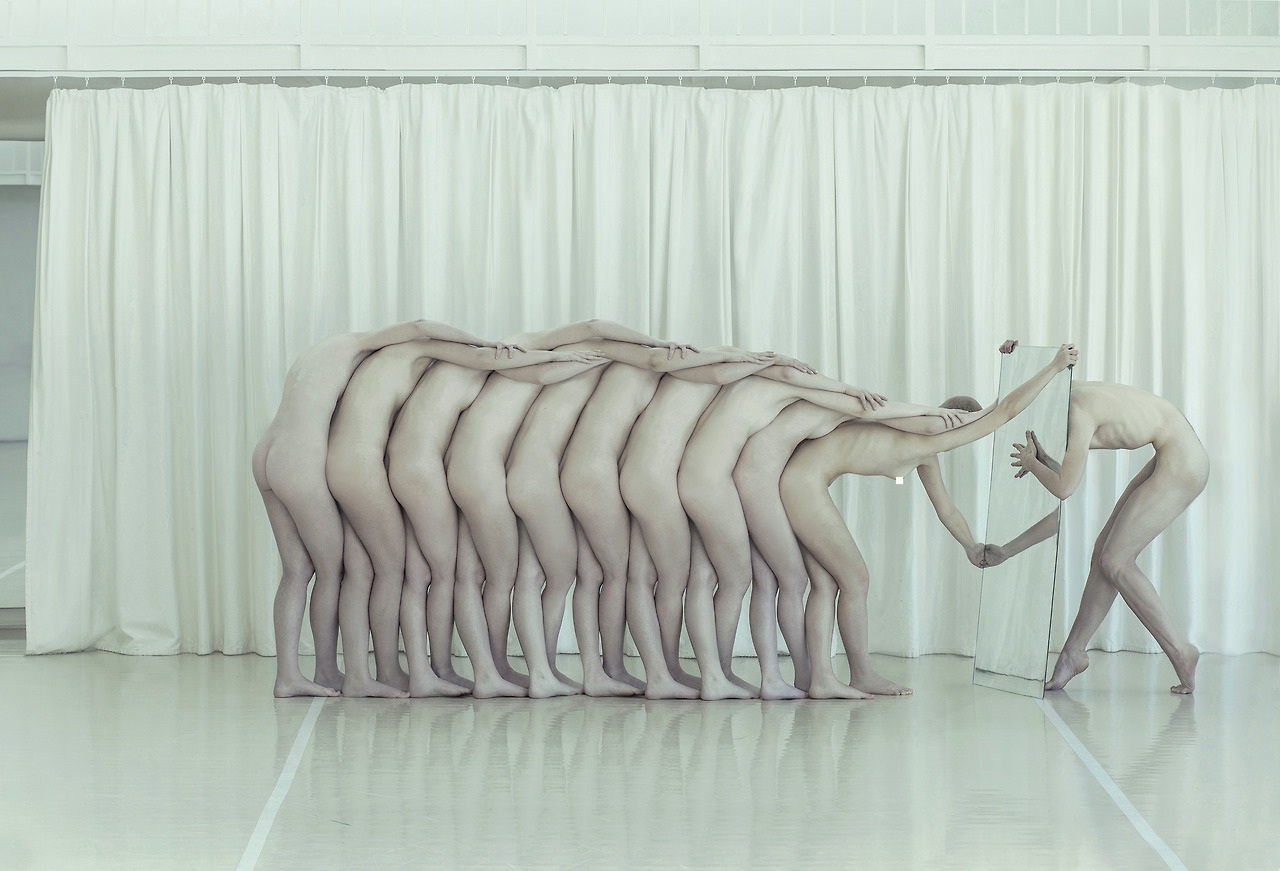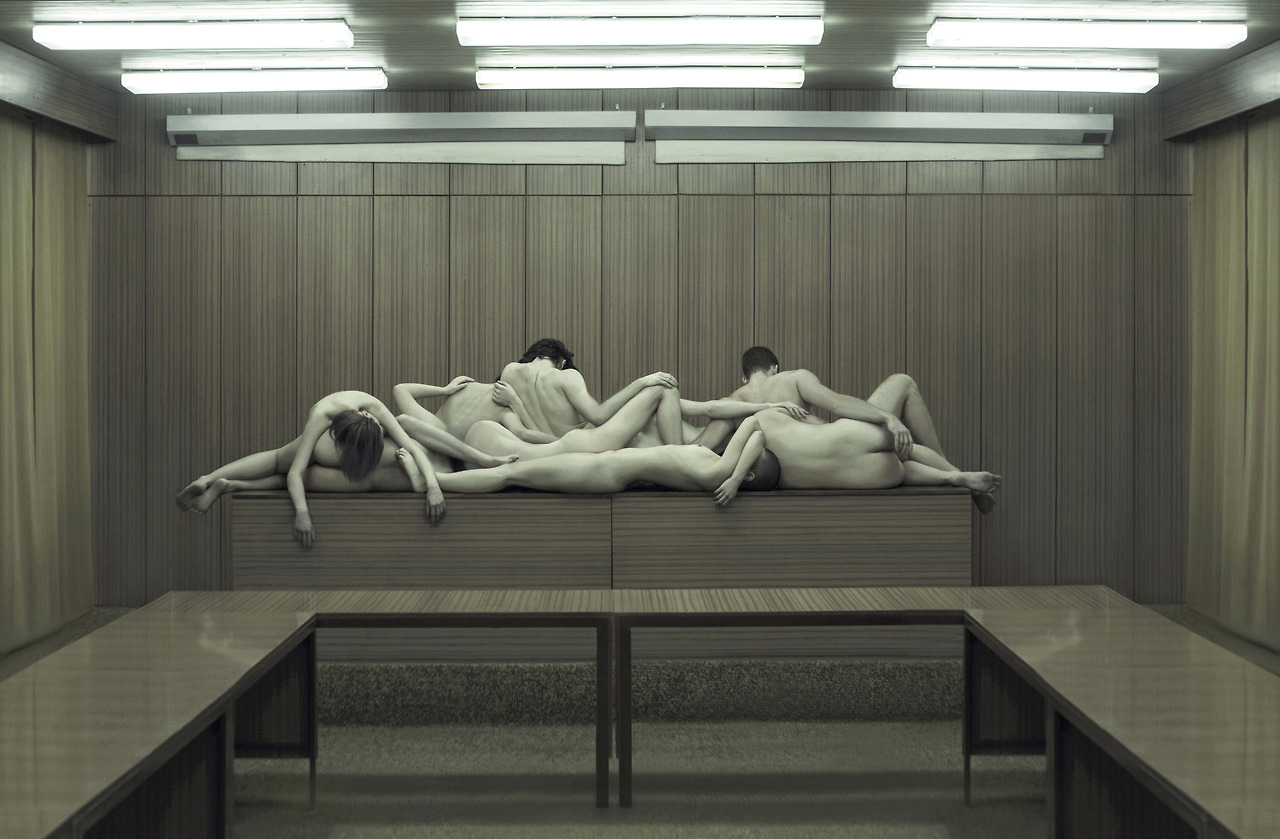The Eye of the Beholder: Ecce Homo by Evelyn Bencicova
/The somber hued photographs in Berlin-based artist Evelyn Bencicova's series Ecce Homo feature faceless nudes arranged in immaculate compositions that range from purely sculptural to darkly dramatic.
The Latin phrase Ecce Homo translates to "behold the man" and is a common artistic motif most often associated with representations of the Passion of Christ. Religious references are found throughout this series, one example being the scene built upon tiled stairs which brings to mind Michelangelo's Creation of Adam, and another composition which suggests the multi-armed Hindu goddess of time and death, Kali.
Bencicova also evokes the Holocaust within some of her photographs, an allusion partly enforced by her German residence, but clearly defined by the waif like bodies in contorted piles and dimly sterile environments. Standing bodies crowded in a tiled room starkly recall the gas chamber, and a pile of seemingly lifeless ballerinas can be interpreted as a representation of the destruction and criminalization of arts and culture under Nazi rule.
The way Bencicova hides the faces of her models from the camera's eye can be seen as a reference to the indiscriminate nature of death, as the increasing destruction of the private self found in modern culture, and the dehumanization of women within the political struggle over the control of their bodies.
Eerie, flat lighting and a grey-green color scheme unite all the photographs within Ecce Homo, giving flesh a marble-like quality and each setting a silent, deserted feeling. Even as Bencicova uses the human figure as a non-individual, sculptural tool, a palpable intimacy is created by the closeness of the bodies, and her flawless human compositions are emotive, contemplative, and beautiful.
